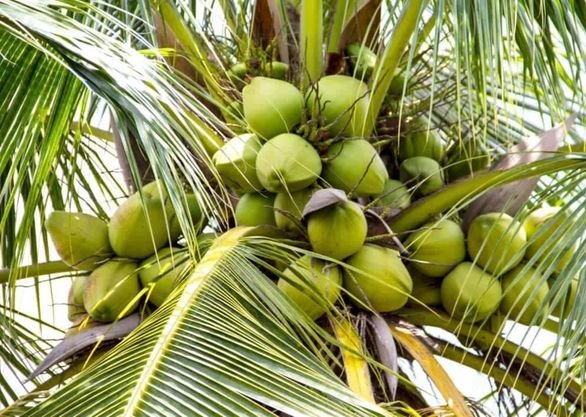GROWING COCONUT TREE

GROWING COCONUT TREE
Introduction
Coconut is mostly grown in India. Coconut is mainly grown for industrial purposes, especially in making hair, oil, soaps, and other industrial purposes. Coconut is also grown in the coastal region of Kenya. Coconut is grown in more than 93 countries in the world. While India is the largest producer of coconut in the world. There are different varieties of Coconut also depending on the region of growth.
Ecological Requirements
The optimum temperatures for the growth of coconut are 27°C and humidity of 6°C &7°C. Coconut plants do well at an altitude of 600m above sea Level. The rainfall required for the cultivation of coconut should be well distributed annually it should be between a range of 1000mm and 3000mm. Well-distributed rainfall leads to high production. Coconut does well in a wide variety of soil conditions. The characteristics of the soil should be well-drained, fertile, proper depth, and also land topography. The soil pH range between 5.0 and 8.0. The soil should have a good water-holding capacity and a minimum depth of 1.2m.
Land preparation and Planting
The grower should dig pits with the recommended depth and the pits should be filled with loose soil, and cow manure and added to a depth of 60cm before planting takes place. The depth of the pits is dug according to the type of soil. Afterward, fill the pits with coconut husks and arranged them from the bottom on a coconut surface facing upwards for proper moisture conservation. Later apply the appropriate farm lime. The planting spacing is 7.5m × 7.5m. The spacing will be at least hold 170 palms per acre. The seedlings that are one year old with a minimum of 6 leaves and a girth of 10cm at the collar level are selected for planting in the main field. Plant the seedling before the onset of rain.
Maintenance and Irrigation
After planting regular manuring from the first year is recommended for good vegetative growth and high maximum yields. Organic manures are applied when the soil moisture is of high content. Green manure crops can be used for later intercropping. If the grower is not aware of what fertilizer to apply they should visit a farmhouse. There are different varieties of methods used to irrigate coconut they include; under basin method, summer irrigation, and drip irrigation system can also be used in the appropriate amounts. Operations such as tiling, digging, plowing, and forming small mounds help in the proper growth of the coconut trees. Regular inter-cultivation should be done to help control weeds.
Harvesting
They are harvested at intervals in a year. The harvesting time varies depending on the production of the trees. If the garden is well maintained and branches are produced regularly they can be harvested every month. Coconuts mature at least 12 months after the opening of the spathe. The ripe coconut is suitable for coconut products.
For more information on the growth and production of Coconut, you can contact www.stephennaturals.com for guidance and consultancy.